Birdsong hits its glorious annual peak in April and May, when the widest range of bird species throw their energy into one of our most uplifting wildlife phenomena. There are two purposes to birdsong: to attract a mate, and to hold down a territory.
Spring’s dawn chorus is not to be missed – the volume and variety of birds singing is so intense and uplifting. Simon Barnes, in his book Rewild Yourself, reckons it is the “single biggest wildlife miracle that we have in Britain”.
What is the dawn chorus?
Spring’s increasing day length triggers a hormonal change in birds that enlarges the parts of the brain controlling song production. The result is one of Britain’s most accessible wildlife dramas – the dawn chorus.
Morning is when females are most receptive to fertilisation after producing an egg and males sing to proclaim their territory and defend their paternity rights.
Birdsong can carry up to 20 times further during the earlier and cooler hours of the day, enabling males' songs to reach more females.
Here's how to identify different bird songs and bird calls
What time is the dawn chorus?
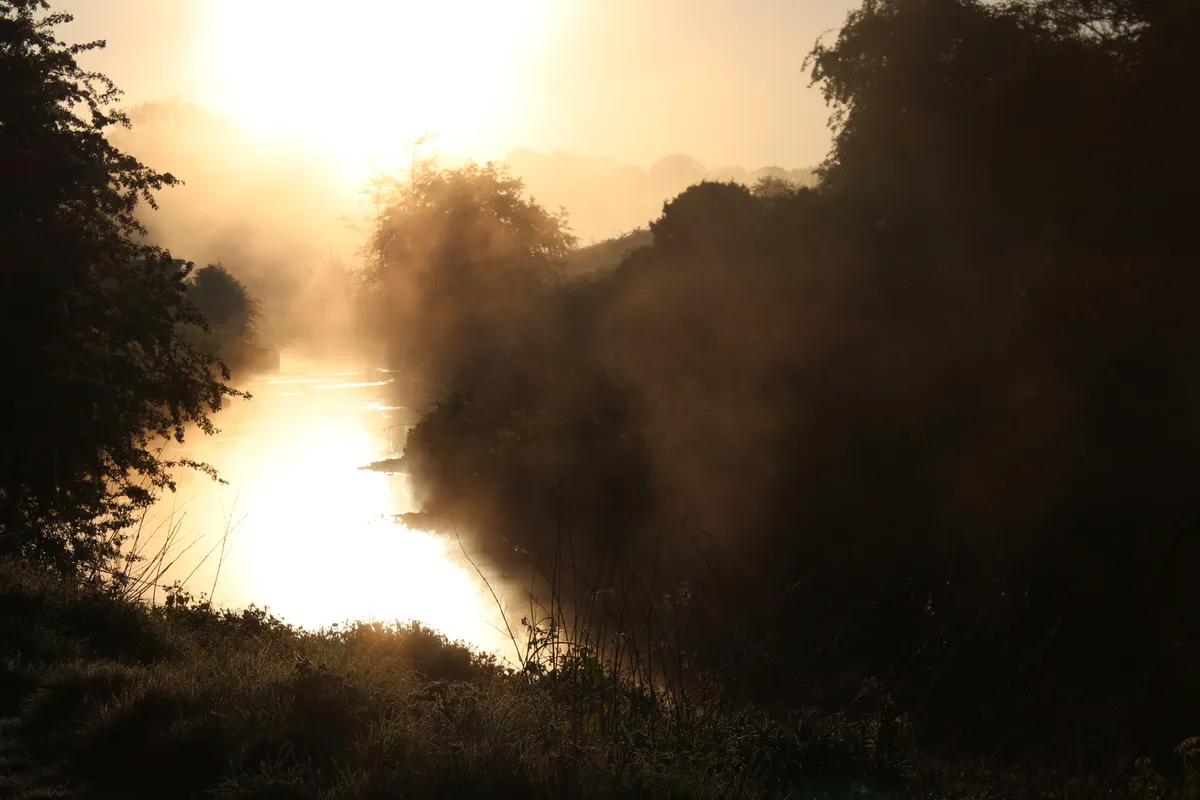
As the name suggests, the dawn chorus is first thing in the day and you'll need to set your alarm early in order get out in the garden or further afield to appreciate the dawn chorus – by 6.30am, it has peaked already and is dying down!
Aim to be in place by 5am – a woodland or park is ideal, but every habitat has a dawn chorus.
Do only male birds sing?
Traditionally, ornithologists and naturalists thought that it was just the male birds that could sing, with females only able to call. However, recent research shows that females do sing – but since it's usually less often and quieter, and females are usually more cryptic (staying hidden and typically duller in colour and patterning), it's much easier to miss their song.
A study published in 2016 found that in a sample of over 1,000 songbird species around the world, over 64% had females that sing.
There is also evidence that male researchers are less likely to study female birdsong than female researchers, and ornithology (and natural history) has historically been dominated by men.
Discover some of the brilliant but overlooked women who have studied birds. Plus inspiring female naturalists and environmentalists throughout history.
Which species will I hear in the dawn chorus in the UK?
The cacophony of birdsong can be intimidating to pick apart and try to identify the different species. However, with a little knowledge you can start to break the wall of sound into individual species. And if you record the songs (see below), you can play them back later and spend more time on working out which species is singing which song.
Only the group of birds known as 'songbirds' can sing, sometimes known as passerines or searching birds. There are hundreds of songbird species around the world, in fact, more than half of the world's bird species are songbirds.
Songbirds learn and practice their songs, whereas bird calls (made by both songbirds and other birds) are innate.
We've listed some of the species you might hear during the dawn chorus below:
European robin (Erithacus rubecula)
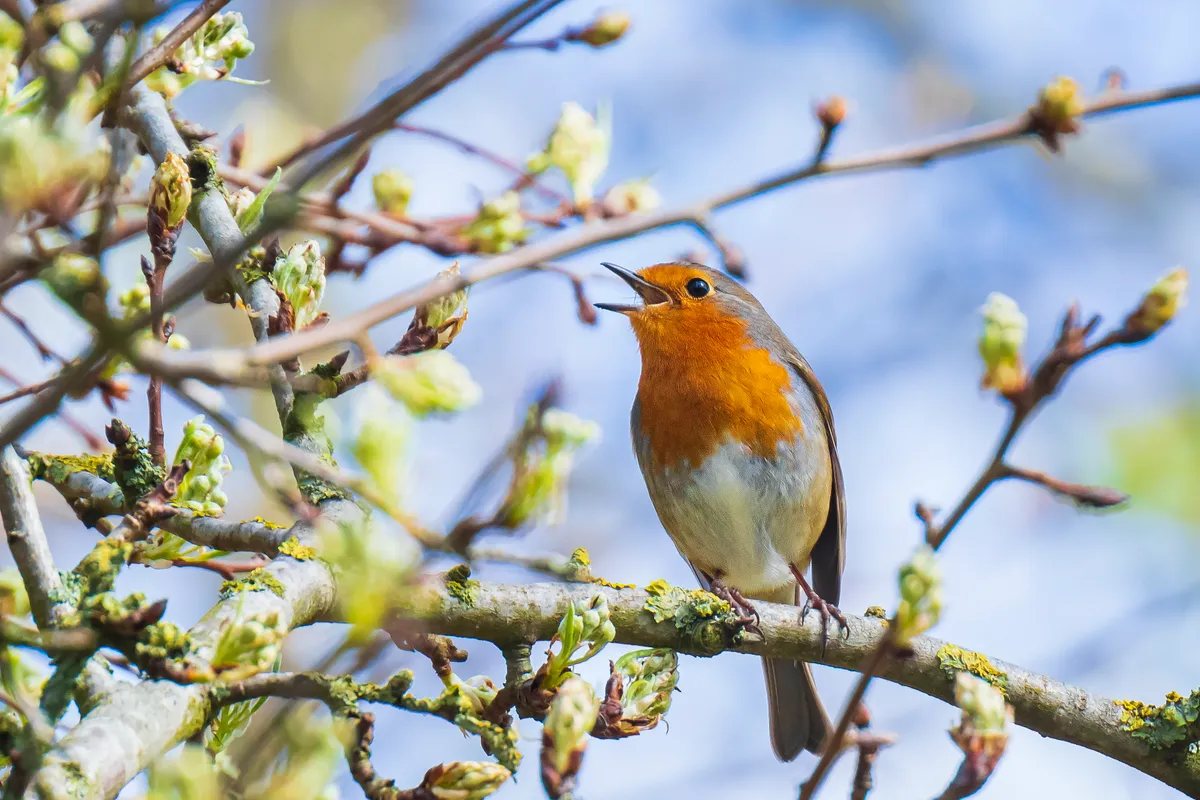
Robins usually kicks off the dawn chorus, and are normally the last to stop singing at night too. They are even known to sing overnight in towns and gardens, where robins can mistake streetlights and floodlights for daylight. As such, their song can be mistaken for nightingales. Robins will sing all year round, defending their territories, and can be found in a wide variety of habitats.
Common blackbird (Turdus merula)
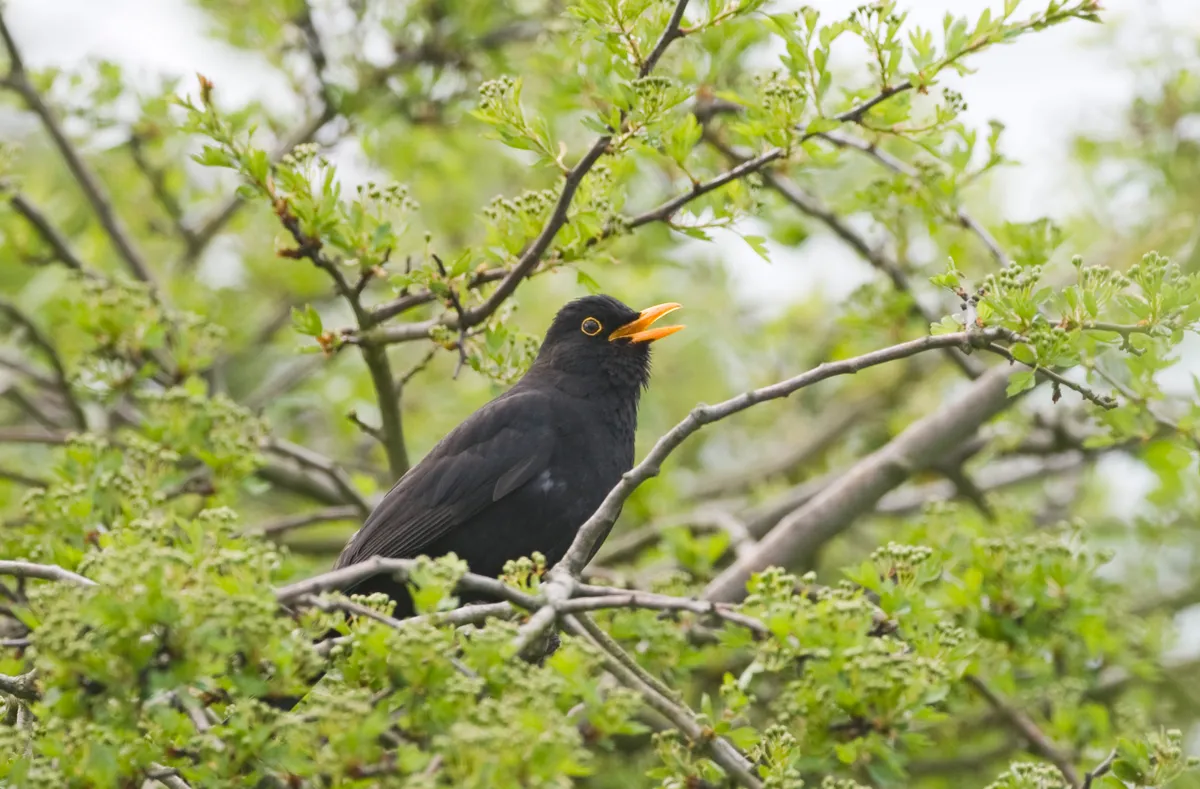
Blackbirds are also amongst the earliest singers in the dawn chorus, with a fluty and melodic whistle. Blackbirds don't repeat the verses, unlike the song thrush. Like the robin, they are known to sing under artificial light.
Eurasian wren (Troglodytes troglodytes)
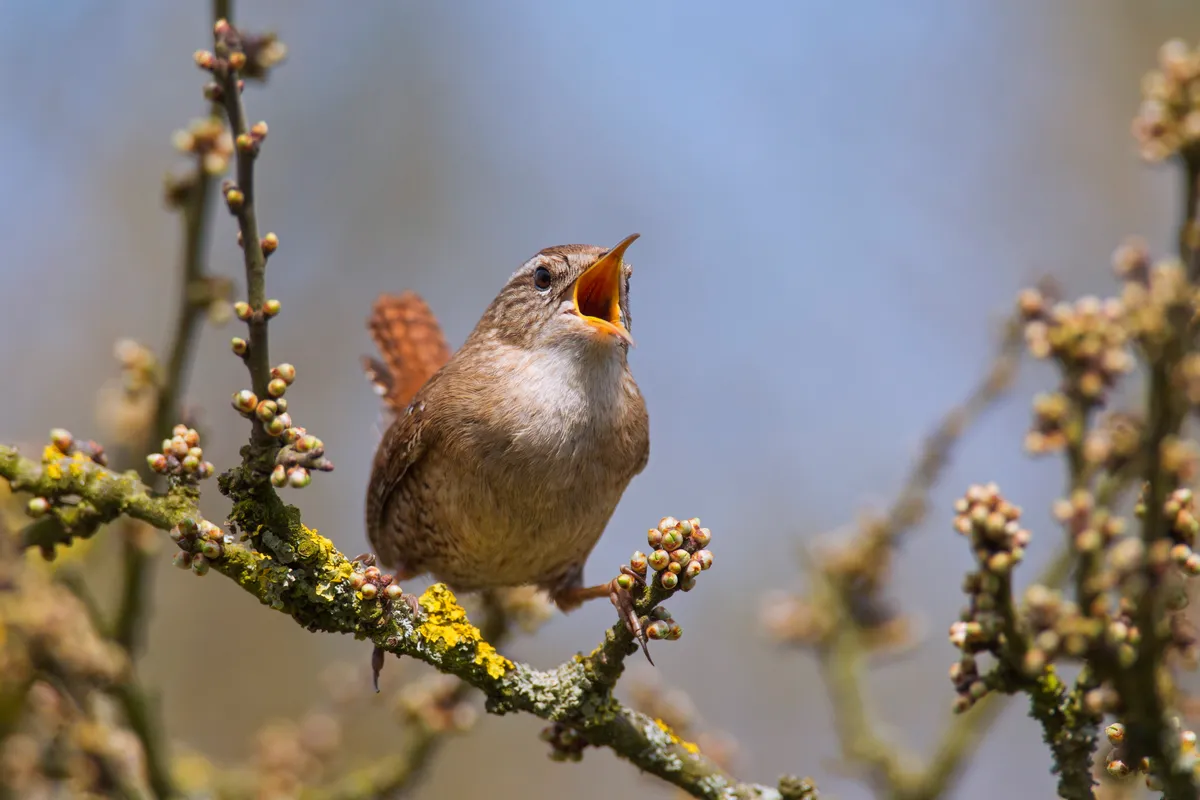
Although it may be very small, the wren is a startlingly loud bird. As Stephen Moss wrote in his wren feature in the January 2019 issue of BBC Wildlife Magazine, “no other British bird, with the possible exception of Cetti's warbler, has quite such as loud voice for its size ... Few bird songs are quite so distinctive, and quite so full of character, as that of the wren.”
The wren's scientific name, Troglodytes troglodytes, is a tautonym, where the genus and specific name are the same.
Common chiffchaff (Phylloscopus collybita)
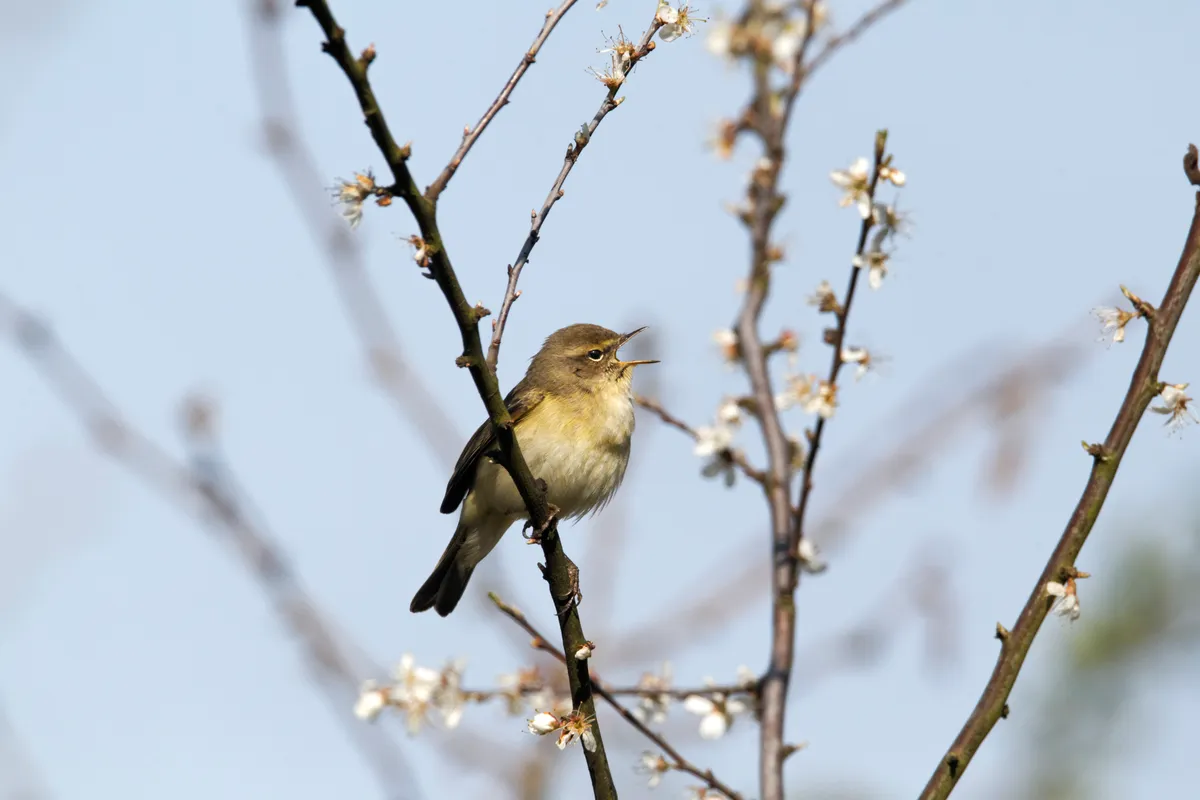
Similar in appearance to willow warblers, chiffchaffs have a distinctive song. Repeated over and over, the seesaw ditty is rudimentary yet uplifting. Jeremy Mynott, co-author of The Consolation of Nature, points out that the two-syllable song is better reflected by the warbler's old names: chip-chop, chit-chat, siff-saff.
Song thrush (Turdus philomenus)
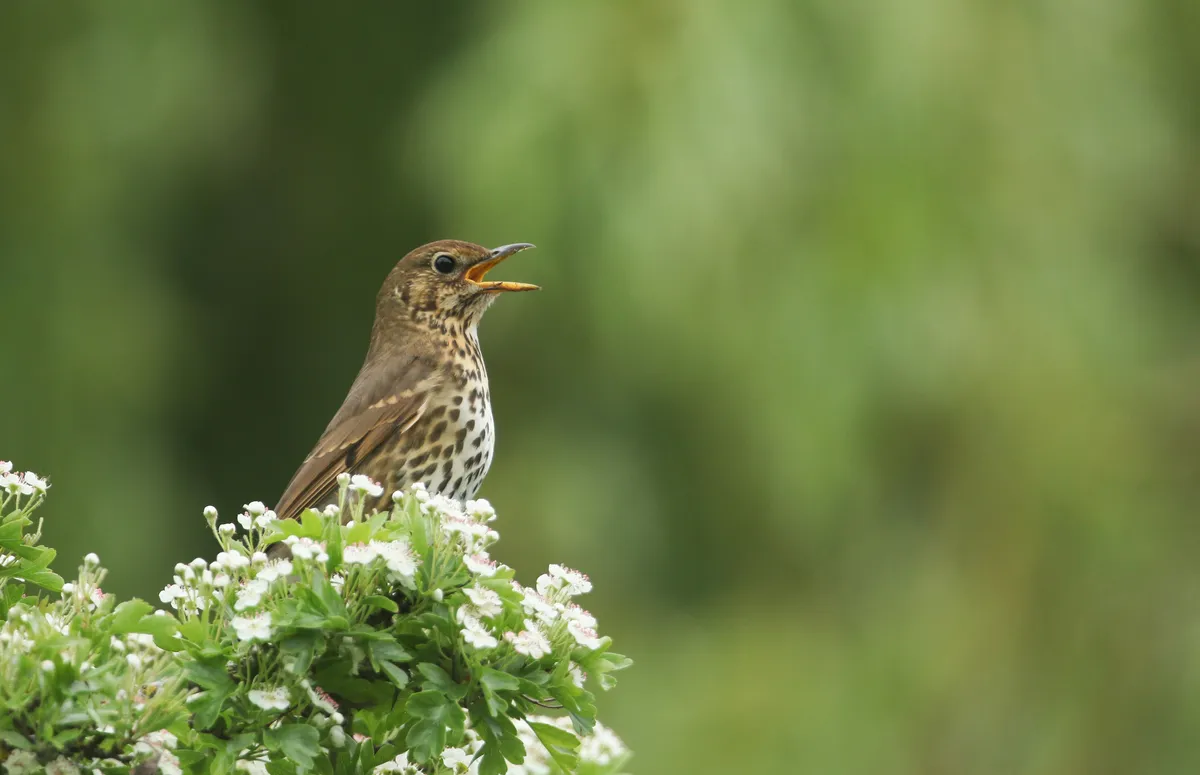
The song thrush is among the first to sing each morning – according to a Royal Society study, typically 47 minutes before sunrise (just after the blackbird). Its signature style is many short fluty phrases, each repeated a few times after a moment’s pause. An oft-quoted estimate is that a male performs a million individual phrases during a breeding season.
Song thrushes have been in full voice for several weeks now, as have mistle thrushes, blackbirds, robins and dunnocks. As the dawn chorus in all its rich complexity is still a way off, they really stand out. So, it’s the ideal time to learn these common songs. A good way of doing this is to ascribe characters to each one. “Whereas the blackbird and robin are musical,” writes Stephen Moss in 2017’s Wonderland, “the song thrush is chatty and loquacious, almost as if he is having a good gossip.”
Sedge warbler (Acrocephalus schoenobaenus)
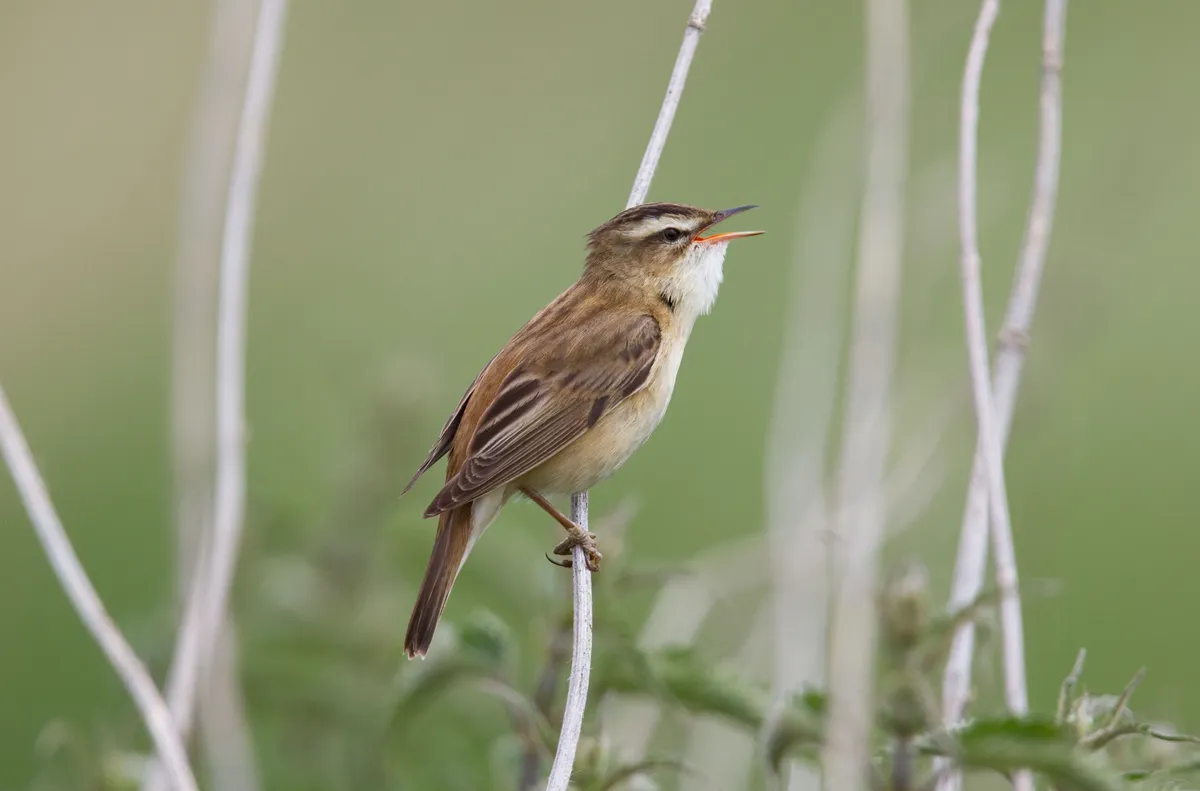
One of the jazziest performers is this streak-backed little bird, which sings its scratchy, chattering song from reeds and bushes, often in quite small wetlands beside rivers or canals. Some say a male sedge warbler never sings the same song twice. He has “endless capacity for variation”, writes Simon Barnes in his book On the Marsh, “as if...the whole spring was one song.”
Eurasian blackcap (Sylvia atricapilla)
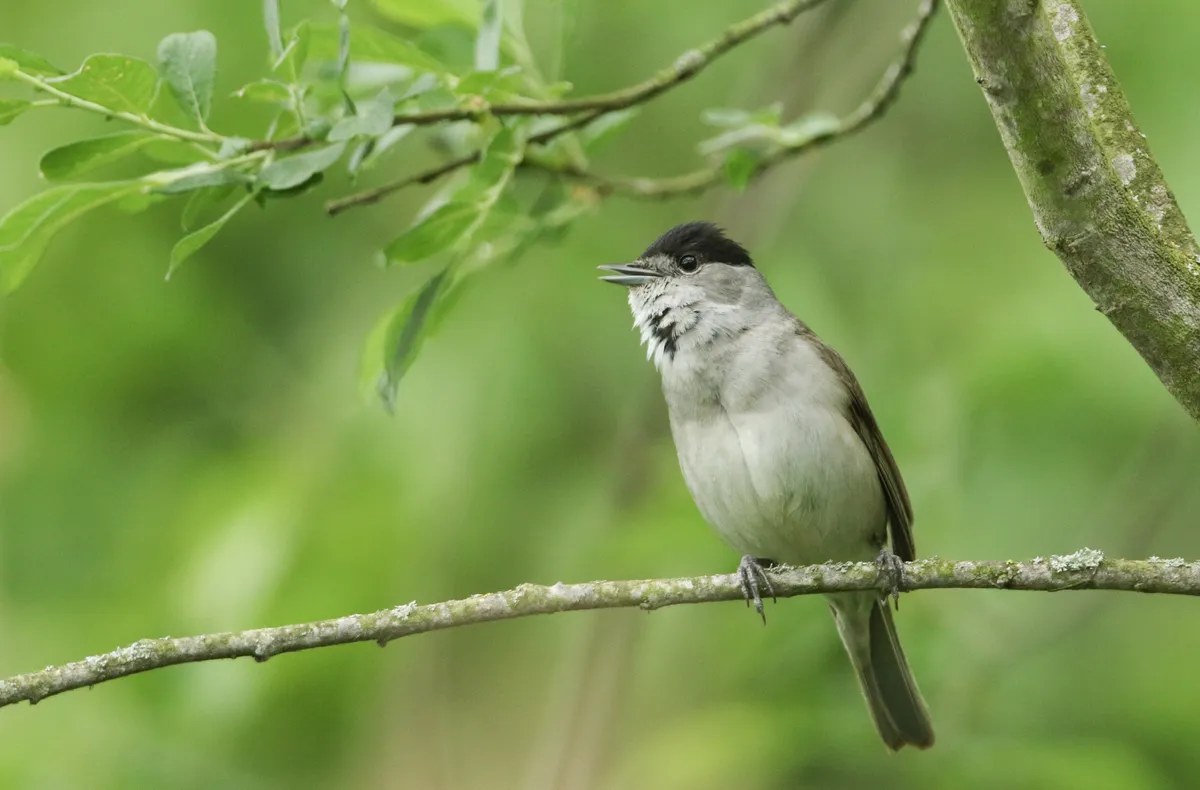
Among the multitude of robins, wrens, thrushes and tits, one abundant warbler you are almost bound to hear is the blackcap, whose song is so sweet and sustained that it is often mistaken for a nightingale.
Common redstart (Phoenicurus phoenicurus)
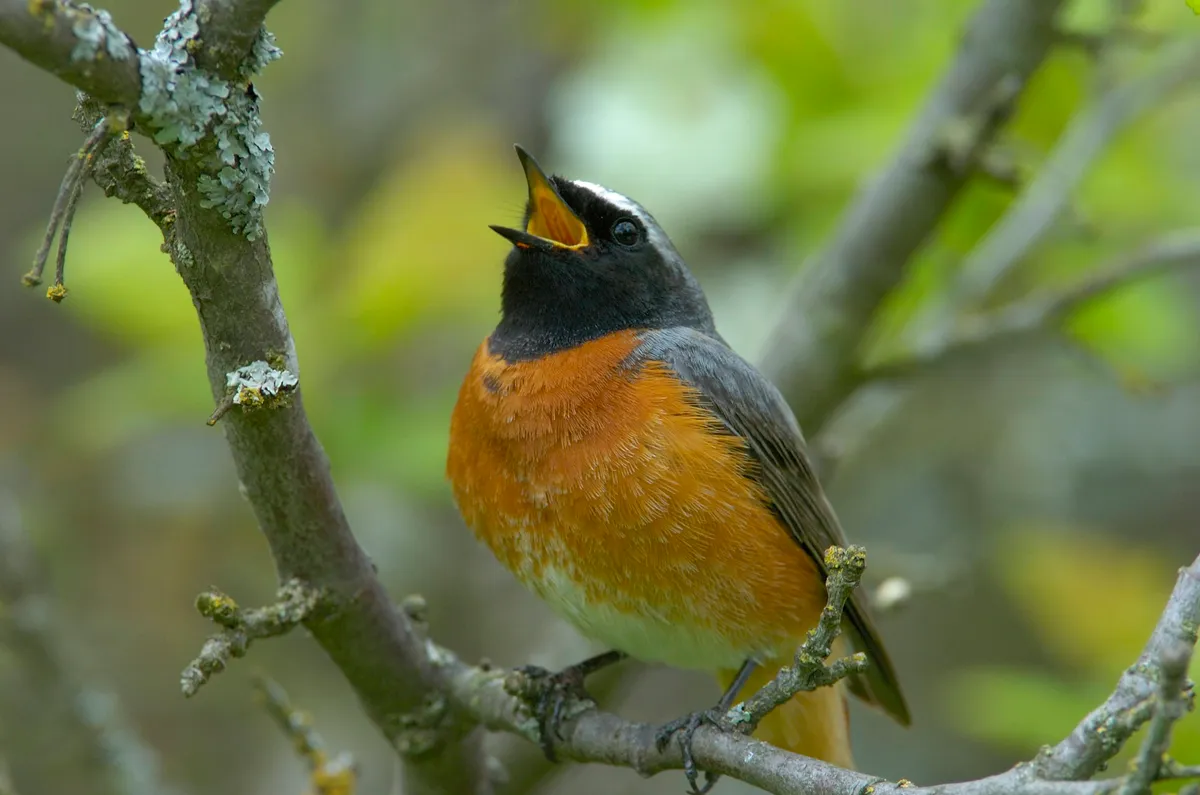
Similar in size to a European robin, but slimmer, with longer wings and tail, the bright orange-red chest, rump and tail of a spring male redstart proves a striking contrast to its black face and throat. Often found in the slightly more open areas, their short, strident warble frequently kicks off the dawn chorus.
The redstart's scientific name, Phoenicurus phoenicurus, is a tautonym, where the genus and specific name are the same.
Eurasian bittern (Botaurus stellaris, also known as great bittern)
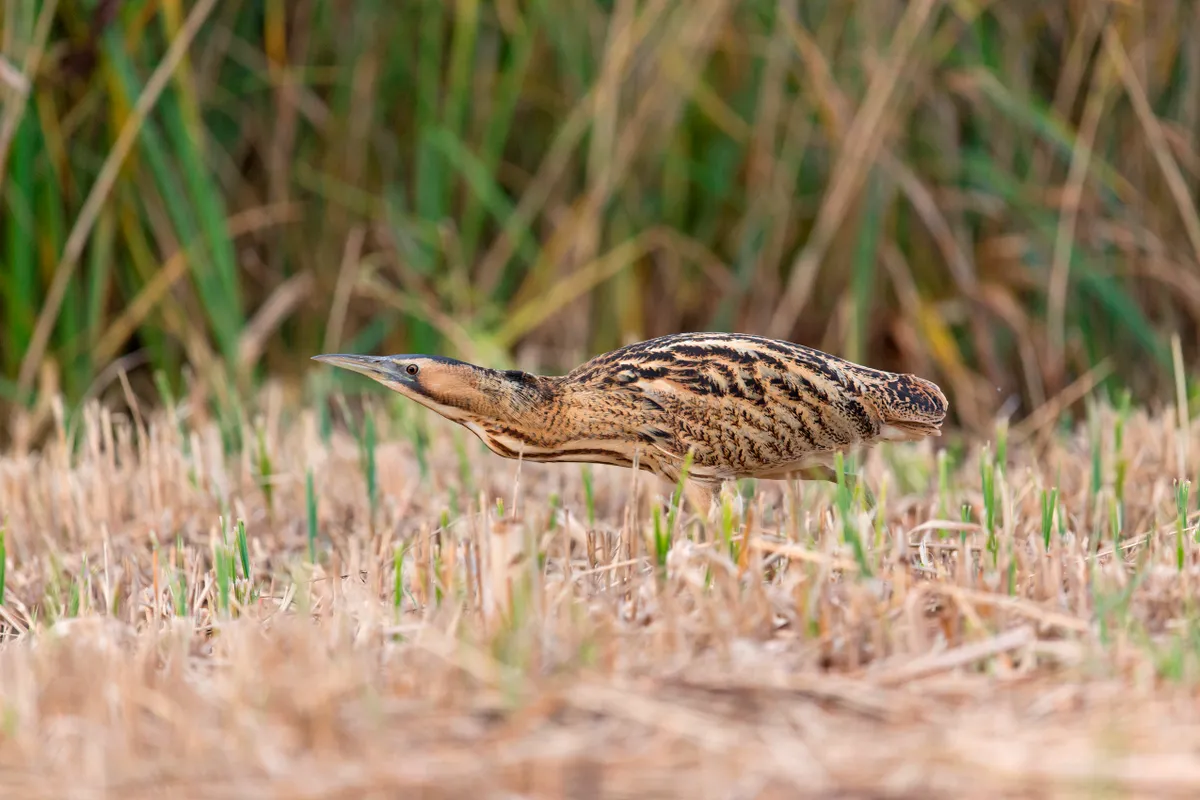
Although not a songbird, and thus unable to sing, we've included the bittern here as it's pre-dawn call is a truly remarkable sound, and the experience of hearing one booming is unforgettable. This streaky, stealthy seedbed heron was once known as the ‘fenland’ tiger, while ‘bog bumper’ is one go yer many old names alluding to its foghorn voice. Males boom from deep within reeds in spring: the ultra-low frequency sound is like someone blowing over an empty bottle. On a calm day, the sound is said to travel up to 5km.
Where can I listen to the dawn chorus?
The dawn chorus takes place anywhere there are birds – even in cities! Different habitats will feature songs from different species, some examples of which ones you can hear are:
- Urban: house sparrow, pigeon, robin, blackbird, herring gull, great tit
- Woodland: redstart, song thrush, robin, blackbird
- Wetland: sedge warbler, reed warbler, reed bunting, bittern
- Moorland: curlew, skylark, golden plover, redshank
Best places to listen to the dawn chorus
Naturalist, presenter and BBC Wildlife writer Mike Dilger describes the dawn chorus as “a musical feast like no other” and shares his top five locations to experience it.
He also says, “if the idea of getting out of bed ridiculously early goes against the grain, then why not try a dusk chorus instead? While undoubtedly quieter when compared to the chorus offered at first light, several birds such as blue tits, tree sparrows and nightingales appear to prefer saving their singing to that slot before bedtime.”
RSPB Wood of Cree, Dumfries and Galloway, Scotland
You can hear redstart, pied flycatcher and wood warbler all vying for attention in this RSPB woodland in Dumfries and Galloway.
RSPB Minsmere, Suffolk, England
The vast array of habitats at this Suffolk nature reserve makes it one of the most iconic places to enjoy a dawn chorus. Where else could you hear nightingales and bittern at the same time?
Hampstead Heath, London, England
Over 180 species have been recorded across the heath, woodland, wetland and grassland in this public space. It offers an unparalleled opportunity to hear the dawn chorus before London rouses itself in preparation for another noisy day.
Shapwick Heath Reserve, Somerset, England
This diverse reserve on the Somerset Levels is not just a place to listen for cuckoos and bitterns, it can boast up to 10 species of warblers in April and May.
RSPB Belfast Lough, Belfast, Northern Ireland
This coastal reserve offers an unrivalled opportunity to hear a diverse dawn chorus that is not just on the outskirts of the city but also just across the water from a busy port.
How can I record the dawn chorus?
If you have a phone, camera or dictaphone, you can try recording the birdsong on one of those. To take it a step further, try making a parabolic recorder with a plant pot (or mixing bowl, or dustbin lid), which will amplify and record sounds around you.
When is the International Dawn Chorus Day?
International Dawn Chorus Day began over 30 years ago by wildlife enthusiast and local broadcaster Chris Baines, before becoming established and promoted by the Wildlife Trust for Birmingham and the Black Country. This exciting event now involves participants from over 80 countries. It takes place on the first Sunday in the month of May. In 2021, this is 2 May.
Normally conservation organisations would organise guided walks, but due to the coronavirus pandemic and the need to continue with social distancing, such events are not running this year.
